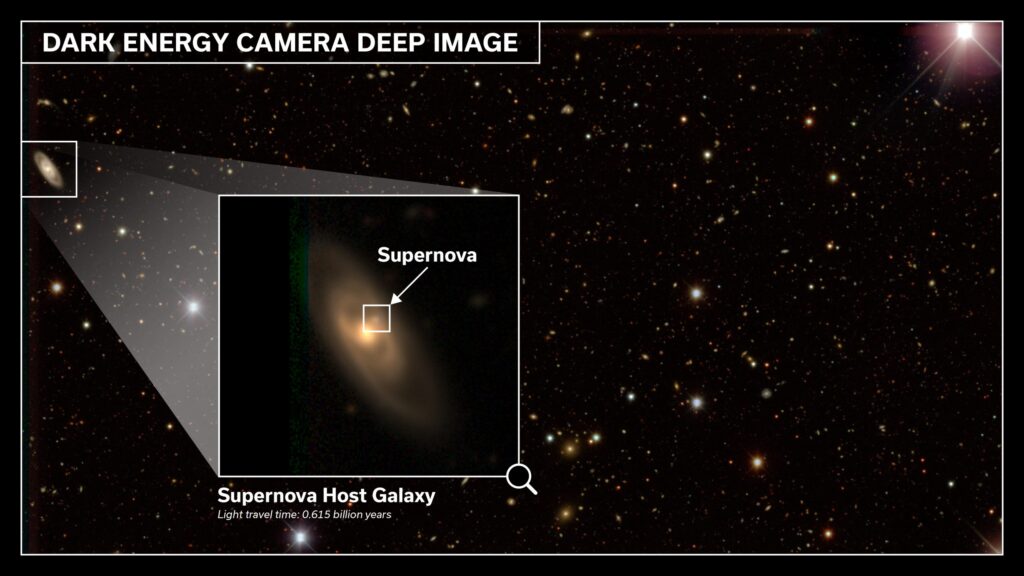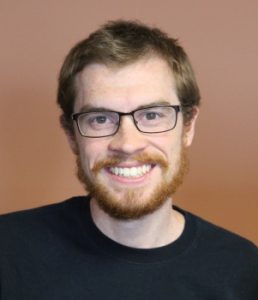This post is modified from one originally published by Fermilab
In the culmination of a decade’s worth of effort, the Dark Energy Survey collaboration of scientists analyzed an unprecedented sample of nearly 1,500 supernovae classified using machine learning. They placed the strongest constraints on the expansion of the universe ever obtained with the DES supernova survey. While consistent with the current standard cosmological model, the results do not rule out a more complex theory that the density of dark energy in the universe could have varied over time.

DES scientists presented the results January 8 at the 243rd meeting of the American Astronomical Society and have submitted them for publication to the Astrophysical Journal.

The work is the output of over 400 DES scientists, including UW–Madison physics professor Keith Bechtol and former graduate student Robert Morgan, PhD ’22.
In 1998, astrophysicists discovered that the universe is expanding at an accelerating rate, attributed to a mysterious entity called dark energy that makes up about 70% of our universe. While foreshadowed by earlier measurements, the discovery was somewhat of a surprise; at the time, astrophysicists agreed that the universe’s expansion should be slowing down because of gravity.
This revolutionary discovery, which astrophysicists achieved with observations of specific kinds of exploding stars, called type Ia (read “type one-A”) supernovae, was recognized with the Nobel Prize in Physics in 2011.
In this new study, DES scientists performed analyses with four different techniques, including the supernova technique used in 1998, to understand the nature of dark energy and to measure the expansion rate of the universe.
As a graduate student in Bechtol’s group, Morgan was part of the DES supernova working group that worked to identify type Ia supernova. This group had to address two main concerns with the data to enhance detection fidelity.
“One is that there is some leakage of other types of supernovae into the sample, so you have to calibrate the rate of misclassification,” Bechtol explains. “Also, the brightness of the supernova gives us a way of estimating its distance, but there is a distribution of how bright the Ia supernovae are. Because we are slightly less likely to detect the intrinsically fainter supernovae, there is a small bias that needs to be accounted for.”
Bechtol has been part of the DES collaboration since its formation in 2012, serving as a co-convener of the DES’s Science Release Working Group for four years and a co-convener of the Milky Way Working Group for two years. His role in this new study was in data processing and presentation.
“We collect all of the data, process it, and then release it as a coherent set of data products, both for use by the DES collaboration and as part of public releases to the community,” Bechtol says. “One of the aspects I worked on is the photometric calibration — our ability to measure the fluxes of objects accurately and precisely. It’s an important part of the supernova analysis and something that I’ve been working on continuously over the past ten years.”
For the full story, please see the Fermilab news release